Mian Li
Decentralized Equalization for Massive MIMO Systems With Colored Noise Samples
May 22, 2023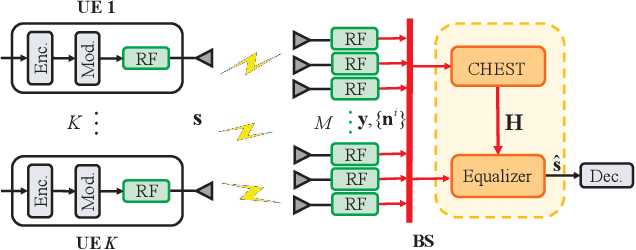
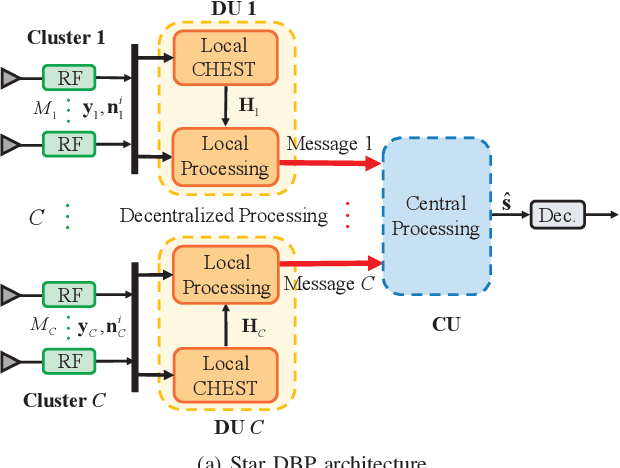
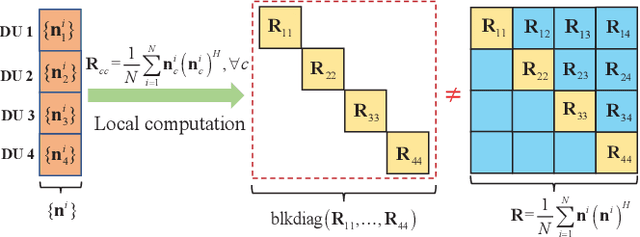
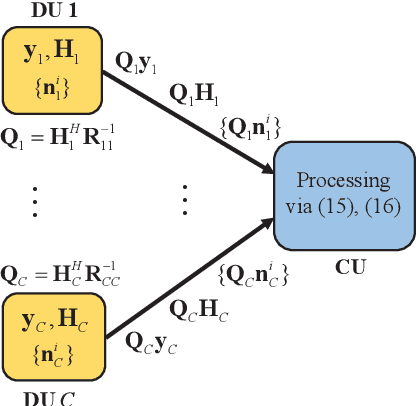
Abstract:Recently, the decentralized baseband processing (DBP) paradigm and relevant detection methods have been proposed to enable extremely large-scale massive multiple-input multiple-output technology. Under the DBP architecture, base station antennas are divided into several independent clusters, each connected to a local computing fabric. However, current detection methods tailored to DBP only consider ideal white Gaussian noise scenarios, while in practice, the noise is often colored due to interference from neighboring cells. Moreover, in the DBP architecture, linear minimum mean-square error (LMMSE) detection methods rely on the estimation of the noise covariance matrix through averaging distributedly stored noise samples. This presents a significant challenge for decentralized LMMSE-based equalizer design. To address this issue, this paper proposes decentralized LMMSE equalization methods under colored noise scenarios for both star and daisy chain DBP architectures. Specifically, we first propose two decentralized equalizers for the star DBP architecture based on dimensionality reduction techniques. Then, we derive an optimal decentralized equalizer using the block coordinate descent (BCD) method for the daisy chain DBP architecture with a bandwidth reduction enhancement scheme based on decentralized low-rank decomposition. Finally, simulation results demonstrate that our proposed methods can achieve excellent detection performance while requiring much less communication bandwidth.
Task-wise Split Gradient Boosting Trees for Multi-center Diabetes Prediction
Aug 16, 2021



Abstract:Diabetes prediction is an important data science application in the social healthcare domain. There exist two main challenges in the diabetes prediction task: data heterogeneity since demographic and metabolic data are of different types, data insufficiency since the number of diabetes cases in a single medical center is usually limited. To tackle the above challenges, we employ gradient boosting decision trees (GBDT) to handle data heterogeneity and introduce multi-task learning (MTL) to solve data insufficiency. To this end, Task-wise Split Gradient Boosting Trees (TSGB) is proposed for the multi-center diabetes prediction task. Specifically, we firstly introduce task gain to evaluate each task separately during tree construction, with a theoretical analysis of GBDT's learning objective. Secondly, we reveal a problem when directly applying GBDT in MTL, i.e., the negative task gain problem. Finally, we propose a novel split method for GBDT in MTL based on the task gain statistics, named task-wise split, as an alternative to standard feature-wise split to overcome the mentioned negative task gain problem. Extensive experiments on a large-scale real-world diabetes dataset and a commonly used benchmark dataset demonstrate TSGB achieves superior performance against several state-of-the-art methods. Detailed case studies further support our analysis of negative task gain problems and provide insightful findings. The proposed TSGB method has been deployed as an online diabetes risk assessment software for early diagnosis.
Primary-Auxiliary Model Scheduling Based Estimation of the Vertical Wheel Force in a Full Vehicle System
Jul 24, 2021



Abstract:In this work, we study estimation problems in nonlinear mechanical systems subject to non-stationary and unknown excitation, which are common and critical problems in design and health management of mechanical systems. A primary-auxiliary model scheduling procedure based on time-domain transmissibilities is proposed and performed under switching linear dynamics: In addition to constructing a primary transmissibility family from the pseudo-inputs to the output during the offline stage, an auxiliary transmissibility family is constructed by further decomposing the pseudo-input vector into two parts. The auxiliary family enables to determine the unknown working condition at which the system is currently running at, and then an appropriate transmissibility from the primary transmissibility family for estimating the unknown output can be selected during the online estimation stage. As a result, the proposed approach offers a generalizable and explainable solution to the signal estimation problems in nonlinear mechanical systems in the context of switching linear dynamics with unknown inputs. A real-world application to the estimation of the vertical wheel force in a full vehicle system are, respectively, conducted to demonstrate the effectiveness of the proposed method. During the vehicle design phase, the vertical wheel force is the most important one among Wheel Center Loads (WCLs), and it is often measured directly with expensive, intrusive, and hard-to-install measurement devices during full vehicle testing campaigns. Meanwhile, the estimation problem of the vertical wheel force has not been solved well and is still of great interest. The experimental results show good performances of the proposed method in the sense of estimation accuracy for estimating the vertical wheel force.
Decentralized Linear MMSE Equalizer Under Colored Noise for Massive MIMO Systems
Jun 23, 2021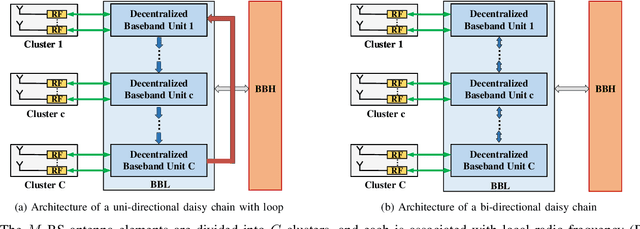
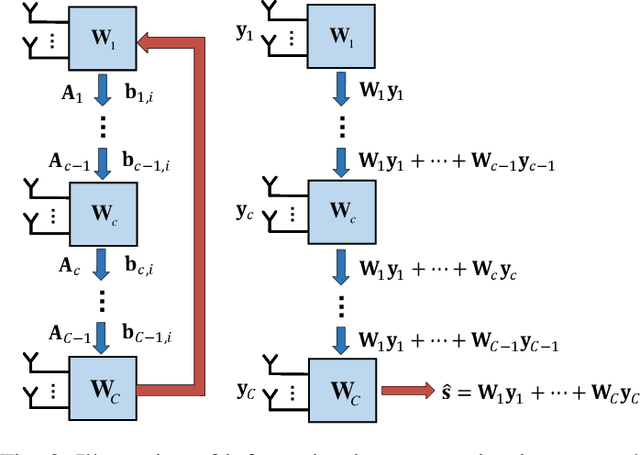
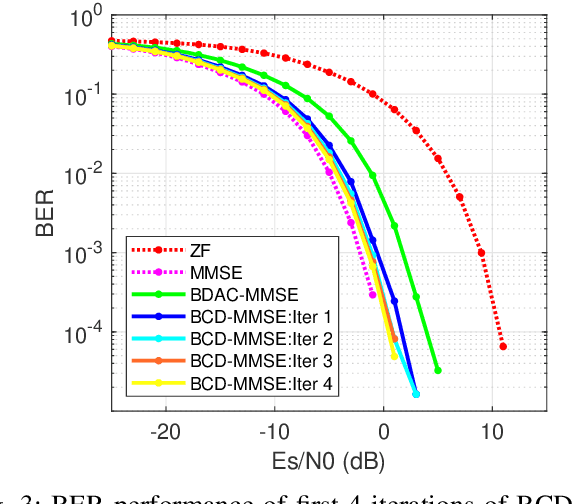

Abstract:Conventional uplink equalization in massive MIMO systems relies on a centralized baseband processing architecture. However, as the number of base station antennas increases, centralized baseband processing architectures encounter two bottlenecks, i.e., the tremendous data interconnection and the high-dimensional computation. To tackle these obstacles, decentralized baseband processing was proposed for uplink equalization, but only applicable to the scenarios with unpractical white Gaussian noise assumption. This paper presents an uplink linear minimum mean-square error (L-MMSE) equalization method in the daisy chain decentralized baseband processing architecture under colored noise assumption. The optimized L-MMSE equalizer is derived by exploiting the block coordinate descent method, which shows near-optimal performance both in theoretical and simulation while significantly mitigating the bottlenecks.
 Add to Chrome
Add to Chrome Add to Firefox
Add to Firefox Add to Edge
Add to Edge